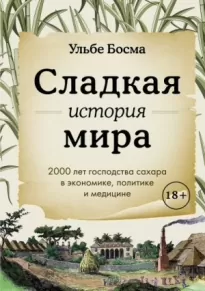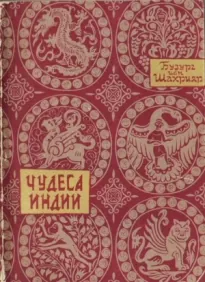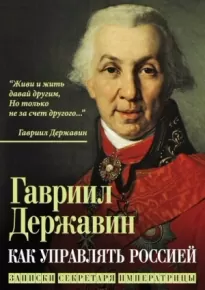Сладкая история мира. 2000 лет господства сахара в экономике, политике и медицине

- Автор: Ульбе Босма
- Жанр: Научная литература / Исторические приключения / История: прочее
Читать книгу "Сладкая история мира. 2000 лет господства сахара в экономике, политике и медицине"
6. Рабство медлит уйти
1 За Кубой следовали Бразилия (82 000 тонн); Индия (60 000 тонн – в Англию, и неизвестное количество в азиатских пределах); Ява (60 000 тонн); Луизиана (49 460 тонн); Маврикий (36 599 тонн); Пуэрто-Рико (36 515 тонн) и Британская Гвиана (35 619 тонн). Noël Deerr, The History of Sugar, vol. 1 (London: Chapman and Hall, 1949), 112, 126, 203, 249.
2 Zachary Macaulay, A Letter to William W. Whitmore, Esq. M.P.… (London: Lupton Relphe, and Hatchard and Son, 1823), 2–4.
3 Harold E.Annett, The Date Sugar Industry in Bengal: An Investigation into Its Chemistry and Agriculture (Calcutta: Thacker Spink, 1913), 289.
4 Ulbe Bosma, The Sugar Plantation in India and Indonesia: Industrial Production, 1770–2010 (Cambridge: Cambridge University Press, 2013), 29.
5 Ulbe Bosma and Jonathan Curry-Machado, «Two Islands, One Commodity: Cuba, Java, and the Global Sugar Trade (1790–1930),» New West Indian Guide 86, nos. 3–4 (2012): 239.
6 Jerome S. Handler and JoAnn Jacoby, «Slave Names and Naming in Barbados, 1650–1830,» William and Mary Quarterly 53, no. 4 (1996): 702, 725; Colleen A. Vasconcellos, Slavery, Childhood, and Abolition in Jamaica, 1788–1838 (Athens: University of Georgia Press, 2015), 72–74.
7 Jerome S.Handler and Charlotte J.Frisbie, «Aspects of Slave Life in Barbados: Music and Its Cultural Context,» Caribbean Studies 11, no. 4 (1972): 11, 38–39.
8 John B.Cade, «Out of the Mouths of Ex-Slaves,» Journal of Negro History 20, no. 3 (1935): 333–334; Richard J. Follett, The Sugar Masters: Planters and Slaves in Louisiana’s Cane World, 1820–1860 (Baton Rouge: Louisiana State University Press, 2007), 220.
9 Jan Jacob Hartsinck, Beschryving van Guiana, of de Wilde Kust, in Zuid-America… (Amsterdam: G.Tielenburg, 1770), 910, 913; John Gabriel Stedman, Reize in de Binnenlanden van Suriname, 2 vols. (Leiden: A. en J.Honkoop, 1799), 2:205.
10 Перевод на английский сделан автором. Victor Schoelcher, Des colonies françaises: Abolition immédiate de l’esclavage (Paris: Pagnerre, 1842), 14.
11 Cade, «Out of the Mouths,» 297–298.
12 J.Wolbers, Geschiedenis van Suriname (Amsterdam: H. de Hoogh, 1861), 455–456.
13 Claude Levy, Emancipation, Sugar, and Federalism: Barbados and the West Indies, 1833–1876 (Gainesville: University Press of Florida, 1979), 20.
14 Hilary McD. Beckles, «The Slave-Drivers’ War: Bussa and the 1816 Barbados Slave Rebellion,» Boletín de Estudios Latinoamericanos y del Caribe, no. 39 (1985): 95, 102–103; Michael Craton, «Proto-Peasant Revolts? The Late Slave Rebellions in the British West Indies 1816–1832,» Past&Present, no. 85 (1979): 101.
15 По различным оценкам, в нем приняло участие от 13 до 30 тысяч рабов. Craton, «Proto-Peasant Revolts?» 106; Richard B. Sheridan, «The Condition of the Slaves on the Sugar Plantations of Sir John Gladstone in the Colony of Demerara, 1812–49,» New West Indian Guide 76, nos. 3–4 (2002): 248.
16 База данных «Центра изучения наследия британского рабовладения» (Legacies of British Slavery Database), статья «John Gladstone,» дата обращения: 27.01.2022. http://www.depts-live.ucl.ac.uk/lbs/person/view/8961.
17 Sheridan, «The Condition of the Slaves,» 256, 259; Anya Jabour, «Slave Health and Health Care in the British Caribbean: Profits, Racism, and the Failure of Amelioration in Trinidad and British Guiana, 1824–1834,» Journal of Caribbean History 28, no. 1 (1994): 4, 7, 10–13.
18 Zachary Macaulay, East and West India Sugar, or, A Refutation of the Claims of the West India Colonists to a Protecting Duty on East India Sugar (London: Lupton Relfe and Hatchard and Son, 1823), 44; Macaulay, A Letter to William W. Whitmore, 31.
19 Bosma, The Sugar Plantation, 64.
20 Robert Montgomery Martin, Facts Relative to the East and West-India Sugar Trade, Addressed to Editors of the Public Press, with Supplementary Observations (London, 1830), 5–6.
21 James Cropper, Relief for West-Indian Distress, Shewing the Inefficiency of Protecting Duties on East-India Sugar, and Pointing Out Other Modes of Certain Relief (London: Hatchard and Son, 1823), 27.
22 Анонимный автор, «A Picture of the Negro Slavery Existing in the Mauritius,» AntiSlavery Monthly Reporter (1829): 375, 378–379.
23 Bosma, The Sugar Plantation, 61.
24 Elizabeth Heyrick, Immediate, Not Gradual Abolition: or, an Inquiry into the Shortest, Safest, and Most Effectual Means of Getting Rid of West Indian Slavery (Boston: Isaac Knapp, 1838), 24.
25 Holcomb, Moral Commerce, 42, 43, chap. 4, 107; Ruth Ketring Nuermberger, The Free Produce Movement: A Quaker Protest against Slavery (Durham, NC: Duke University Press, 1942), 77–79.
26 См.: Seymour Drescher, «History’s Engines: British Mobilization in the Age of Revolution,» William and Mary Quarterly 66, no. 4 (2009): 737–756; J.Quirk and D.Richardson, «Religion, Urbanisation and Anti-Slavery Mobilisation in Britain, 1787–1833,» European Journal of English Studies 14, no. 3 (2010): 269.
27 Levy, Emancipation, Sugar, and Federalism, 55.
28 Hilary McD. Beckles, Great House Rules: Landless Emancipation and Workers’ Protest in Barbados, 1838–1938 (Kingston, Jamaica: Randle, 2004), 45; Cecilia Ann Karch, «The Transformation and Consolidation of the Corporate Plantation Economy in Barbados: 1860–1977» (PhD diss., Rutgers University, 1982), 200; Levy, Emancipation, Sugar, and Federalism, 113, 115–116, 127.
29 G.E.Cumper, «A Modern Jamaican Sugar Estate,» Social and Economic Studies 3, no. 2 (1954): 135.
30 William G.Sewell, The Ordeal of Free Labor in the British West Indies (New York, 1863), 204; W.A.Green, «The Planter Class and British West Indian Sugar Production, before and after Emancipation,» Economic History Review 26, no. 3 (1973): 458–459.
31 Deerr, The History of Sugar, 1:198–199.
32 Thomas C.Holt, The Problem of Freedom: Race, Labor, and Politics in Jamaica and Britain, 1832–1938 (Baltimore, MD: Johns Hopkins University Press, 1992), 278, 317; Karch, «The Transformation,» 193; O.Nigel Bolland, On the March: Labour Rebellions in the British Caribbean, 1934–39 (Kingston, Jamaica: Ian Randle, 1995), 158.
33 West India Royal Commission, Report of… with Subsidiary Report by D.Morris… (Appendix A); Statistical Tables and Diagrams, and a Map (Appendix B) (London: H.M.Stationery Office, by Eyre and Spottiswoode, 1897), 140–142.
34 Bosma, The Sugar Plantation, 71, 78; Andrew James Ratledge, «From Promise to Stagnation: East India Sugar 1792–1865» (PhD diss., Adelaide University, 2004), 240.
35 Bosma, The Sugar Plantation, 67–68.
36 Bosma, The Sugar Plantation, 79.
37 Lynn Hollen Lees, Planting Empire, Cultivating Subjects: British Malaya, 1786–1941 (New York: Cambridge University Press, 2019), 25–26.
38 Leone Levi, On the Sugar Trade and Sugar Duties: A Lecture Delivered at King’s College, London, Feb. 29, 1864 (London: Effingham Wilson, 1864), 12–13. Сведения об импорте сахара в Британию, см.: James Russell, Sugar Duties: Digest and Summary of Evidence Taken by the Select Committee Appointed to Inquire into the Operation of the Present Scale of Sugar Duties (London: Dawson, 1862), app. 1, 87.
39 Seymour Drescher, The Mighty Experiment: Free Labor versus Slavery in British Emancipation (New York: Oxford University Press, 2002), 205; Tâmis Parron, «The British Empire and the Suppression of the Slave Trade to Brazil: A Global History Analysis,» Journal of World History 29, no. 1 (2018): 8.
40 Anthony Trollope, West Indies and the Spanish Main (London: Chapman and Hall, 1867), 101.
41 Bosma, The Sugar Plantation, 83.
42 См.: Leslie Bethell, «The Mixed Commissions for the Suppression of the Transatlantic Slave Trade in the Nineteenth Century,» Journal of African History 7, no. 1 (1966): 79–93; David R.Murray, Odious Commerce: Britain, Spain and the Abolition of the Cuban Slave Trade (Cambridge: Cambridge University Press, 2002); Arthur F.Corwin, Spain and the Abolition of Slavery in Cuba, 1817–1886 (Austin: University of Texas Press, 1967), 112–113, 118–119.
43 Richard Huzzey, «Free Trade, Free Labour, and Slave Sugar in Victorian Britain,» Historical Journal 53, no. 2 (2010): 368–372.
44 Julius Wolf, Zuckersteuer und Zuckerindustrie in den europäischen Ländern und in der amerikanischen Union von 1882 bis 1885, mit besonderer Rücksichtnahme auf Deutschland und die Steuerreform Daselbst (Tübingen: Mohr Siebeck, 1886), 71.
45 Demy P.Sonza and Nicholas Loney, Sugar Is Sweet: The Story of Nicholas Loney (Manila: National Historical Institute, 1977), 53, 59–60.
46 Violeta Lopez-Gonzaga, «The Roots of Agrarian Unrest in Negros, 1850–90,» Philippine Studies 36, no. 2 (1988): 162, 165; Nicholas Loney, José María Espino, and Margaret Hoskyn, A Britisher in the Philippines, or, The Letters of Nicholas Loney: With an Introduction by Margaret Hoskyn and Biographical Note by Consul José Ma. Espino (Manila: National Library, 1964), xx, xxi; Filomeno V.Aguilar, Clash of Spirits: The History of Power and Sugar Planter Hegemony on a Visayan Island (Honolulu: University of Hawaii Press, 1998), 107, 110–117, 128; Sonza and Loney, Sugar Is Sweet, 53, 59–60, 100.
47 Shawn W.Miller, «Fuelwood in Colonial Brazil: The Economic and Social Consequences of Fuel Depletion for the Bahian Recôncavo, 1549–1820,» Forest&Conservation History 38, no. 4 (1994): 190–191.
48 John Richard Heath, «Peasants or Proletarians: Rural Labour in a Brazilian Plantation Economy,» Journal of Development Studies 17, no. 4 (1981): 272; David A.Denslow, «Sugar Production in Northeastern Brazil and Cuba, 1858–1908,» Journal of Economic History 35, no. 1 (1975): 262; J.H.Galloway, «The Sugar Industry of Pernambuco during the Nineteenth Century,» Annals of the Association of American Geographers 58, no. 2 (1968): 291–300.
49 David Eltis, «The Nineteenth-Century Transatlantic Slave Trade: An Annual Time Series of Imports into the Americas Broken Down by Region,» Hispanic American Historical Review 67, no. 1 (1987): 122–123. Томич приводит слегка более высокую оценку в 387 000 рабов за тот же самый период. Dale Tomich, «World Slavery and Caribbean Capitalism: The Cuban Sugar Industry, 1760–1868,» Theory and Society 20, no. 3 (1991): 304.
50 Tomich, «World Slavery,» 304.
51 Manuel Moreno Fraginals, «Africa in Cuba: A Quantitative Analysis of the African Population in the Island of Cuba,» Annals of the New York Academy of Sciences 292, no. 1 (1977): 196, 199–200; Franklin W. Knight, Slave Society in Cuba during the Nineteenth Century (Madison: University of Wisconsin Press, 1970), 76, 82.
52 Luis A.Figueroa, Sugar, Slavery, and Freedom in Nineteenth-Century Puerto Rico (Chapel Hill: University of North Carolina Press, 2005), 98–102.
53 David Turnbull, Travel in the West Cuba: With Notices of Porto Rico, and the Slave Trade (London: Longman, Orme, Brown, Green, and Longmans, 1840), 53.
54 Aisha K.Finch, Rethinking Slave Rebellion in Cuba: La Escalera and the Insurgencies of 1841–1844 (Chapel Hill: University of North Carolina Press, 2015), 69.
55 См.: Joao José Reis, Slave Rebellion in Brazil the Muslim Uprising of 1835 in Bahia (Baltimore, MD: Johns Hopkins University Press, 1993); Thomas Ewbank, Life in Brazil: Or, a Journal of a Visit to the Land of the Cocoa and the Palm… (New York: Harper&Brothers, 1856), 438–441. См. также: Manuel Barcia Paz, West African Warfare in Bahia and Cuba: Soldier Slaves in the Atlantic World, 1807–1844 (Oxford: Oxford University Press, 2016); Finch, Rethinking Slave Rebellion, 48, 78–80, 227.
56 Antón Allahar, «Surplus Value Production and the Subsumption of Labour to Capital: Examining Cuban Sugar Plantations,» Labour, Capital and Society 20, no. 2 (1987): 176–177.
57 American Slavery as It Is: Testimony of a Thousand Witnesses (New York: American Anti-Slavery Society, 1839), 35–39; Rebecca J. Scott, Degrees of Freedom: Louisiana and Cuba after Slavery (Cambridge, MA: Harvard University Press, 2008), 23; Follett, The Sugar Masters, 77; Peter Depuydt, «The Mortgaging of Souls: Sugar, Slaves, and Speculations,» Louisiana History 54, no. 4 (2013): 458.
58 Frederick Law Olmsted, A Journey in the Seaboard Slave States: With Remarks on Their Economy (New York: Dix and Edwards, 1856), 694.
59 Olmsted, A Journey, 675, 689; J. Carlyle Sitterson, Sugar Country: The Cane Sugar Industry in the South 1753–1950 (Lexington: University of Kentucky Press, 1953), 99; Follett, The Sugar Masters, 201; Roderick A. McDonald, «Independent Economic Production by Slaves on Louisiana Antebellum Sugar Plantations,» in The Slaves’ Economy: Independent Production by Slaves in the Americas, ed. Ira Berlin and Philip D.Morgan (London: Frank Cass, 1991), 186, 190.
60 Daniel E.Walker, No More, No More: Slavery and Cultural Resistance in Havana and New Orleans (Minneapolis: University of Minnesota Press, 2004), 28; Albert Bushnell Hart, Slavery and Abolition, 1831–1841 (New York: Harper and Bros., 1906), 114–115.
61 Herbert Aptheker, Essays in the History of the American Negro (New York: International Publishers, 1945), 62.
62 См.: Victor Schoelcher, L’arrêté Gueydon à la Martinique et l’arrêté Husson à la Guadeloupe (Paris: Le Chevalier, 1872); Ryan Saylor, «Probing the Historical Sources of the Mauritian Miracle: Sugar Exporters and State Building in Colonial Mauritius,» Review of African Political Economy 39, no. 133 (2012): 471.
63 О Гавайях см.: Gary Okihiro, Cane Fires: The Anti-Japanese Movement in Hawaii (Philadelphia: Temple University Press, 1991), 15; Joan Casanovas, «Slavery, the Labour Movement and Spanish Colonialism in Cuba, 1850–1890,» International Review of Social History 40, no. 3 (1995): 373–374.
64 B.W.Higman, «The Chinese in Trinidad, 1806–1838,» Caribbean Studies 12, no. 3 (1972): 26–28, 42; Alan H.Adamson, Sugar without Slaves: The Political Economy of British Guiana, 1838–1904 (New Haven, CT: Yale University Press, 1972), 42.
65 Madhavi Kale, «‘Capital Spectacles in British Frames’: Capital, Empire and Indian Indentured Migration to the British Caribbean,» International Review of Social History 41, suppl. 4 (1996): 123.
66 Saylor, «Probing the Historical Sources,» 471; Great Britain Parliament and House of Commons, The Sugar Question: Being a Digest of the Evidence Taken before the Committee on Sugar and Coffee Plantations… (London: Smith, Elder, 1848), 34.
67 Walton Look Lai, Indentured Labor, Caribbean Sugar: Chinese and Indian Migrants to the British West Indies, 1838–1918 (Baltimore, MD: Johns Hopkins University Press, 2003), 157–158, 184–187; R.W.Beachey, The British West Indies Sugar Industry in the Late 19th Century (Oxford: B. Blackwell, 1957), 107.
68 J.H.Galloway, The Sugar Cane Industry: An Historical Geography from Its Origins to 1914 (Cambridge: Cambridge University Press, 1989), 175.
69 G.W.Roberts and J.A.Byrne, Summary Statistics on Indenture and Associated Migration Affecting the West Indies, 1834–1918 (London: Population Investigation Committee, 1966), 127.
70 Roberts and Byrne, Summary Statistics, 127.
71 John McDonald and Ralph Shlomowitz, «Mortality on Chinese and Indian Voyages to the West Indies and South America, 1847–1874,» Social and Economic Studies 41, no. 2 (1992): 211; Watt Stewart, Chinese Bondage in Peru: A History of the Chinese Coolie in Peru, 1849–1874 (Chicago: Muriwai Books, 2018), 17–22, 37–38.
72 Lisa Lee Yun, The Coolie Speaks: Chinese Indentured Laborers and African Slaves in Cuba (Philadelphia: Temple University Press, 2009), 17, 29, 31, 83, 84, 140, 148, 149.
73 Peter Klaren, «The Sugar Industry in Peru,» Revista de Indias 65, no. 233 (2005): 37; Michael J. Gonzales, «Economic Crisis, Chinese Workers and the Peruvian Sugar Planters 1875–1900: A Case Study of Labour and the National Elite,» in Crisis and Change in the International Sugar Economy 1860–1914, ed. Bill Albert and Adrian Graves (Norwich, England: ISC Press, 1984), 188–189, 192.
74 Bosma, The Sugar Plantation, 93–94.
75 См.: G.R.Knight, «From Plantation to Padi-Field: The Origins of the Nineteenth Century Transformation of Java’s Sugar Industry,» Modern Asian Studies, no. 2 (1980): 177–204.
76 J.Van den Bosch, «Advies van den Luitenant-Generaal van den Bosch over het Stelsel van Kolonisatie,» in Het Koloniaal Monopoliestelsel Getoetst aan Geschiedenis en Staatshuishoudkunde, ed. D.C.Steijn Parvé (Zalt-Bommel, the Netherlands: Joh. Noman en Zoon, 1851), 316–317.
77 Knight, «From Plantation to Padi-Field,» 192; G.H.van Soest, Geschiedenis van het Kultuurstelsel, 3 vols. (Rotterdam: Nijgh, 1871), 2:124–125, 145.
78 Jan Luiten van Zanden, «Linking Two Debates: Money Supply, Wage Labour, and Economic Development in Java in the Nineteenth Century,» in Wages and Currency: Global Comparisons from Antiquity to the Twentieth Century, ed. Jan Lucassen (Bern: Lang, 2007), 181–182.
79 Ulbe Bosma, «Migration and Colonial Enterprise in Nineteenth Century Java,» in Globalising Migration History, ed. Leo Lucassen and Jan Lucassen (Leiden: Brill, 2014), 157.
80 Saylor, «Probing the Historical Sources,» 471.
81 Van Soest, Geschiedenis van het Kultuurstelsel, 3:135.
82 См.: Pim de Zwart, Daniel Gallardo-Albarrán, and Auke Rijpma, «The Demographic Effects of Colonialism: Forced Labor and Mortality in Java, 1834–1879,» Journal of Economic History 82, no. 1 (2022): 211–249.
83 Bosma, The Sugar Plantation, 100–118.
84 Ulbe Bosma, «The Discourse on Free Labour and the Forced Cultivation System: The Contradictory Consequences of the Abolition of Slave Trade for Colonial Java 1811–1863,» in Humanitarian Intervention and Changing Labor Relations: The Long-Term Consequences of the British Act on the Abolition of the Slave Trade (1807), ed. M.van der Linden (Leiden: Brill, 2010), 410–411; Bosma, The Sugar Plantation, 111.





